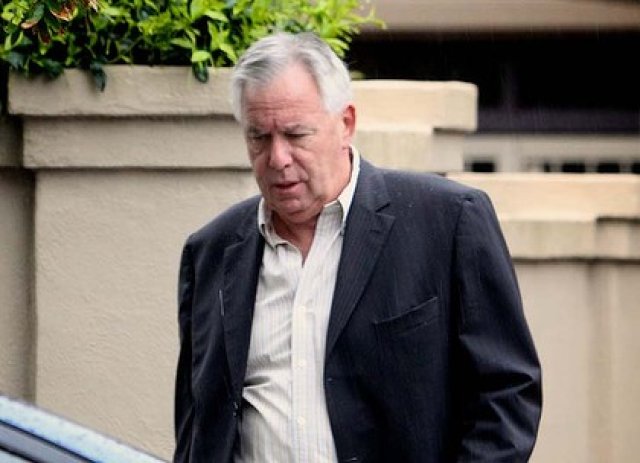
Institutional corruption and lack of governance are serious issues requiring forensic and transparent public examination both in Australia and throughout the rich world.
The global economy has been stagnant since 2008, thanks to unregulated financial derivative markets estimated at the time at one quadrillion (one million billion) US dollars. Betting on interest rates and foreign exchange rates accounted for more than half of this amount.
In May this year, US and British regulators fined six global banks $US5.6 billion for manipulating currency markets. This brings the total fines paid by the 10 most affected banks to more than $US240 billion since 2008. Some solace, no doubt, to the scores of millions plunged into poverty.
For some time now, the Australian Securities Investments Commission (ASIC) has been investigating the big four Australian banks and other financial institutions in relation to manipulating foreign exchange and commodity rates, as well as the bank bill swap rate (BBSW), the rate at which Australian banks lend to each other.
This followed a 2012 investigation which found that banks had been manipulating the London interbank offered rate (Libor), the most widely used interest rate in the world, in order to increase their trading profits.
Prior to the Libor scandal, the BBSW was set each business day by the Australian Financial Markets Association (AFMA) on the advice of a panel of market participants. In September 2013, AFMA stopped deriving the BBSW from its survey of banking representatives, presumably because they could not be trusted.
ASIC’s investigation has so far led to three foreign-owned banks operating in Australia being fined $1.6 million. But the response by Australian-owned banks has been to attempt to stall the investigation, despite the ANZ bank suspending seven of its traders last year.
ASIC chairperson, Greg Metcalf, has described the behaviour of many institutions involved in the BBSW investigation as “absolutely appalling”, with significant delays due to an overly legalistic approach to ASIC’S requests for information. Rather optimistically, he called on banks’ boards to encourage cooperation.
For abundant caution, he also threatened them with the message that the regulator has what he described a “war chest” of $50 million at its disposal for the investigation. He is reported as saying: “It is a carrot and stick. We can do this the easy way, but we will use it, we have accumulated it.”
Well, yes, but the big four banks had accumulated profits of $28.6 billion last year, an increase of 5.7% on their $27.1 billion profit in 2013.
The federal government was so concerned about issues of governance and corruption that, following the start of the 2013 ASIC investigation, it established a royal commission in March last year. This one, though, was into trade union governance and corruption.
The stated rationale for this inquiry comes largely from the scandalous behaviour of Health Services Union (HSU) officials. Michael Williamson, former national president of the union and the ALP, was sentenced to seven-and-a-half year’s jail early last year for defrauding the HSU.
Craig Thompson, former national secretary of the union and a federal Labor MP has also been convicted and fined for theft of union funds related to misuse of union credit charges.
Former HSU official, Kathy Jackson, was the self-styled whistle-blower in the Williams and Thompson matters and seen as the royal commission’s star witness. Prime Minister Tony Abbott said: “I think what she has done has been heroic”.
This was before the HSU began proceedings in the Federal Court seeking recovery of more than $660,000 of personal expenses and $1.07 million in separate unauthorised spending by Jackson. Despite Jackson declaring herself bankrupt on the eve of the trial, the HSU is committed to continuing the case.
The royal commission was happy to oblige Jackson’s request to delay further examination of her HSU dealings in its jurisdiction until the overlapping Federal Court proceedings are completed.
This does rather demonstrate the point that unions have consistently made about this royal commission — that there are existing remedies for any charges against union officials or members who may face allegations of transgressing the law — and they are in the courts of law established for this purpose.
But this is not so when it comes to corporate crime. This was recognised in a statement by ASIC’s Greg Metcalf last October, in which he said that penalties for “white collar crime” are so light that it is actually financially worthwhile to commit corporate crime. The result of this relaxed regime was that Australia had become a “paradise for white collar criminals”.
With union membership down to 17%, the lowest levels in the history of the ABS series of data collection, wages growth at its lowest level since 1998 and industrial disputes also at record low levels, unions are hardly much of a threat to continuing capital accumulation. It is their links to the ALP that count in this royal commission.
But the banks and financial institutions can get up to their shenanigans shielded by a corporate veil — no head to be kicked, no spirit to be damned and, it seems, no one to be held accountable. Now there’s a case for a royal commission of inquiry.
Like the article? Subscribe to Green Left now! You can also like us on Facebook and follow us on Twitter.